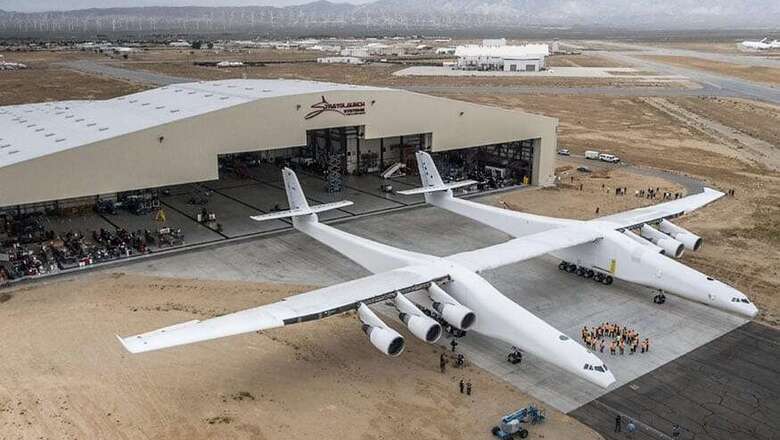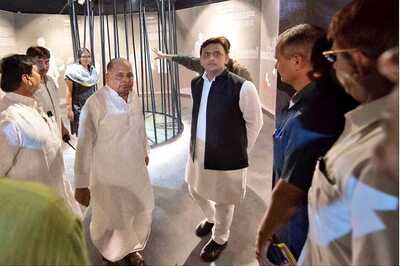
views
New Delhi: Considered to be one of the most sought after courses in India, mechanical and civil engineering seem to be losing their charm to newer disciplines. A recent study has revealed that B.Tech aspirants are now preferring computer science engineering, aerospace engineering and mechatronics with nearly 60% of candidates opting for the emerging technologies.
According to the findings of the committee for 'Preparing Short and Medium Term Perspective Plan for Engineering Education in India', the capacity utilisation of the traditional engineering disciplines such as mechanical, electrical, civil and electronics engineering is around 40%. On the other hand, the capacity utilisation of computer science and engineering, aerospace engineering, mechatronics is 60%.
The committee, formed by All India Council for Technical Education and headed by BVR Mohan Reddy, pointed out that the figures of capacity utilisation for traditional and emerging technologies "are a clear pointer that the demand lies in emerging technologies as opposed to traditional engineering".
“We recommend that no additional seats are approved in traditional engineering areas, but institutions need to be encouraged to convert current capacity in traditional disciplines to emerging new technologies.”
The other members of the committee — Shobha Mishra Ghosh, assistant secretary general (FICCI), Dr Shalini Sharma, senior consultant and head higher education, CII, Dr Sandhya Chintala, vice-president-NASSCOM, Deepak Chabra, senior executive ASSOCHAM, Dr Jatinder Singh, director- Ph.D Chamber of Commerce and Industry, and Dr Raj Aggarwal, director- centre for management education, AIMA.
Recommendations for Emerging Technologies
Across all engineering disciplines, the committee recommended that courses in these emerging technologies are made part of the curricula and made mandatory for computer science, electrical, and electronics engineering.
The Committee has specifically recommended introducing undergraduate engineering programs exclusively focused in artificial intelligence, internet of things, blockchain, robotics, quantum computing, data sciences, cyber security, 3D printing and design.
The members have emphasised that greater focus should be on multi-disciplinary engineering courses, especially in computational biology, biotechnology, biomedical, mechatronics, space, aerospace, agriculture, and environmental engineering, by reducing the seats in conventional disciplines and converting some of the existing seats into these areas.
Employability of Engineering Graduates
The employability of engineering graduates showed that the enrolment in computer science and engineering, aerospace engineering, mechatronics, and biomedical engineering is progressively increasing. The data mentioned in the report stated that mechatronics reported 65% of enrolment and biomedical Engineering saw 69% enrolment in 2017-18, much above the country average of 49%.
The 2016 World Economic Forum report on the future of jobs detailed how skill requirement would morph over a decade - on an average, by 2020, more than a third of the desired core skill sets of most occupations will be comprised of skills that are not yet considered crucial to the job as in 2016.
It also pointed out that key technology trends are driven by AI, big data analytics, IoT, and cloud computing, require engineers to gain not just the technical skills but higher order cognitive skills. NASSCOM conducted a comprehensive study with Boston Consulting Group and found the same trend in favour of emerging technologies.
Further, the report suggested that it "is important to note that these new technologies will find application in every other industry such as agriculture, BFSI, life sciences, pharmaceuticals, healthcare, retail, automotive, manufacturing, energy, genomics, and transportation."
The chairman of AICTE Anil Sahasrabuddhe endorsed this cross-sectoral application of emerging technologies. “The traditional technical education will never die but what we need to do is blend the two –emerging and traditional technical education for desired results. Some of the newer IITs are already bringing the two streams together,” he said.
The committee recommended introducing undergraduate engineering programs exclusively focused on emerging technologies and put greater focus on multi-disciplinary engineering courses, especially in computational biology, biotechnology, biomedical, mechatronics, space, aerospace, agriculture, and environmental engineering, by reducing the seats in conventional disciplines and convertingsome of the existing seats into these areas.
No New Capacity from 2020
The committee has observed that current (2017-18) capacity utilization in undergraduate and post-graduate level is as low as 49.8%. (Capacity Vs. Enrollment).
“Creating any further capacity is a big drain on investments since, at the very basic level, it involves the creation of physical infrastructure like buildings and lab infrastructure. We recommend that we do not create any new capacity starting from the academic year 2020. The creation of new capacity can be reviewed every two years after that,” it said.
While they took such a serious decision, they also recognized that there could be some applications in the pipeline for additional/new capacity applied in the last one or two years. These may be pending for want of some minor clearances. “So, applications made in the current year and the past two years may be considered for starting institutions if the infrastructure is already in place. We recommend that AICTE should take capacity utilization as a key consideration while granting additional capacities in different states,” said the report.
Today, about 3,500 institutions are disseminating engineering education in India. However, it is observed that enrolment into various engineering courses has been on the decline in the country since 2012-13.
AICTE has taken cognizance of the situation, and since 2016, it acted as a proactive regulator in reducing the number of engineering seats (capacity) in the country. This has helped in improving the seat utilization. Also, the pass percentages and placements for fresh graduates have steadily improved over the years.




















Comments
0 comment